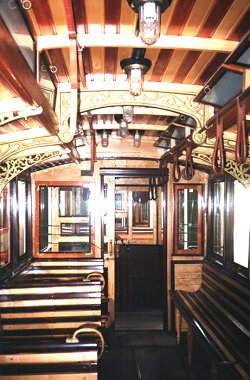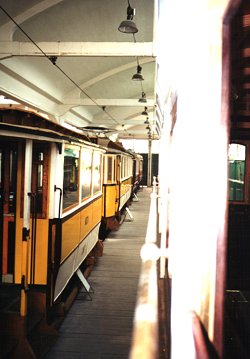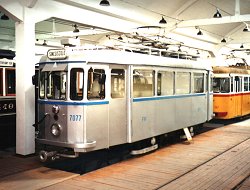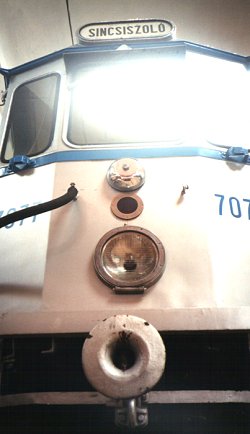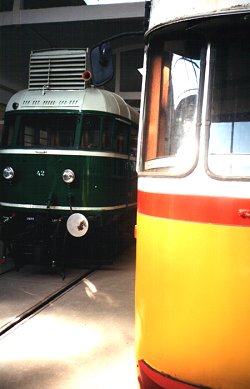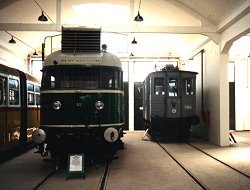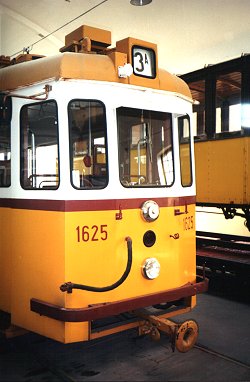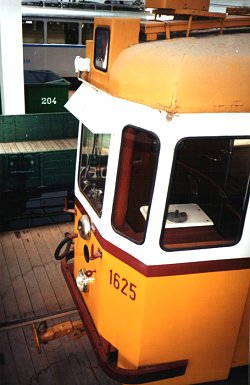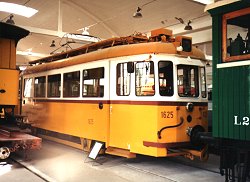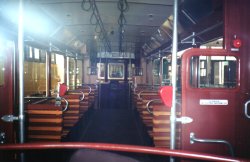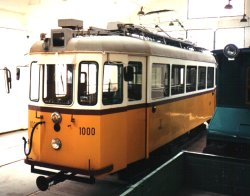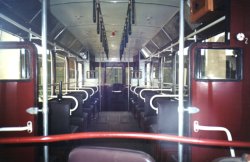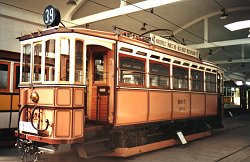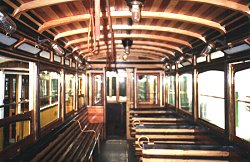budapest
other hungarian
close-up
lost rails
other countries
Episode one...
Szentendre is a small village near Budapest with a nice old city core. It's also the terminus of one of the BKV's (Budapest Public Transportation Company) HÉV (suburban railway) lines, and the site of a maintenance workshop. In 1991 a museum was opened in one of the oldest buildings of the remise, erected in 1914. Objects and vehicles from the history of Budapest's public transportation can be seen here, from streetcars to locos, from uniforms to old instruments used for track maintenance, from old pictures to old buses. A nice place for a tram enthusiast!
A part of the building houses a nice photocollection from the history of public transportation in Hungary (not just Budapest), but my pictorial starts in the main remise shed. One of the first things the visitor sees is this old HÉV steam loco. A compact engine, I must say, and it also looks funny!
The main attraction for me here are the old streetcars, restored to some of their original states (they were rebuilt many times during their life!). Most of the motorcars displayed here are operable, but unfortunately you cannot take a ride because the trams in Hungary are using 600V DC while the HÉV uses 1000V... The tram in the center of the picture is a BKVT Type D/Q built in 1898, restored to it's 1906 state.
The interior of this car with the typical stripy wooden seats and ornated ceiling supports.
Part of the old rolling stock displayed here.
The driver's place in the 1913 BVVV Type L streetcar Nr. 436. If you skipped the opening page: BVVV was one of the Budapest tram companies between 1887 and 1923, while BKVT (owner of the vehicle shown above) was the other. Interestingly, the look of trams operated by the two companies were different although most of their rollings stock was produced by the same companies, namely Schlick and Ganz.
This is track-grinder FVV 7077 (FVV was the name of the tram company formed in 1951) used for buffering deformed tracks by grinding them straight. Originally this was a "Muki" (electric loco), but it was rebuilt in 1958 introducing a body used for normal passenger trams. Of course the seats were replaced by a big water tank used as ballast weight and cooling.
These grinders were used until the 1990's.
When rounded forms meet: to the left an old HÉV Diesel loco from the 1940's, to the the left the Bengali from 1961.
The loco seen on the picture before and a "Muki".
Trams and other railway vehicles all the way: it would have been so nice to have a museum like this in my childhood! Of course most of the streetcars seen here were still used back then :-)
Despite the more modern body, this tram (BKV 1625) was originally built in 1896! It was then one of the bigest and most modern streetcars in Budapest (built by Schlick for BKVT and its subsidiary BVKV as Type F1) with bogies and the cabin seperated to first and second class compartments (!). It was rebuilt many times, for example it was converted into a 2-axle in 1909. The current shape of it is the state it was anulated in 1982, with steel body designed in 1955 and rebuilt in 1972.
Upper front view.
The car surrounded by other old vehicles, for example an old narrow gauge railway car to the left and an old HÉV electric loco to the right.
The interior of 1625. Through the back window you can see another similar car...
... namely BKV Nr. 1000. This is my favorite streetcar! It's a bit younger than 1625: the 1000-series (1001-1080) was built by Ganz and the Machinery and Railway Equipment Company at Kistarcsa in 1911-12 as the bigest and strongest 2-axle of those days (BKVT Type V). Originally it had a wooden-frame body, but was then converted by FVV between 1958 and 1961.
The interior is quite similar to the UV's - most things were standardized those days. You might notice that 1625 looks almost the same except that it had wooden seats while this car has leatherette-covered ones.
And this is how the 1000-series looked originally (BKVT Nr. 1074). Lovely, isn't it?
The interior. This car was not preserved like this but re-rebuilt (reconverted) to its wooden-frame state in 1991. What a great job! Originally it was operable but currently it has been reported to have technical problems. I hope this changes soon and we can see it out on the streets during special occasions or private rides!
Next page: last business day in 2000
The
official web page of the museum (opening hours and address)
Back to the top Back to the main page


